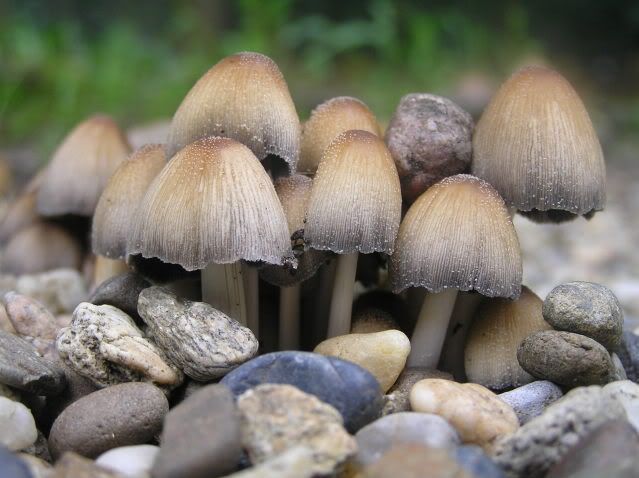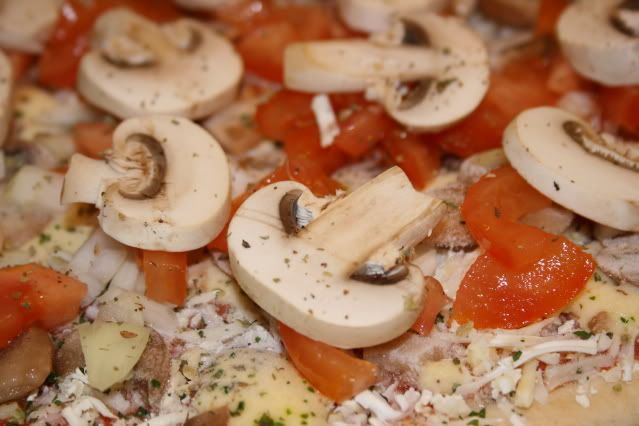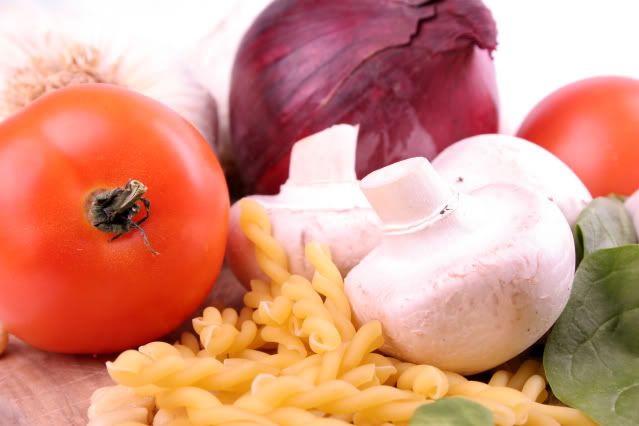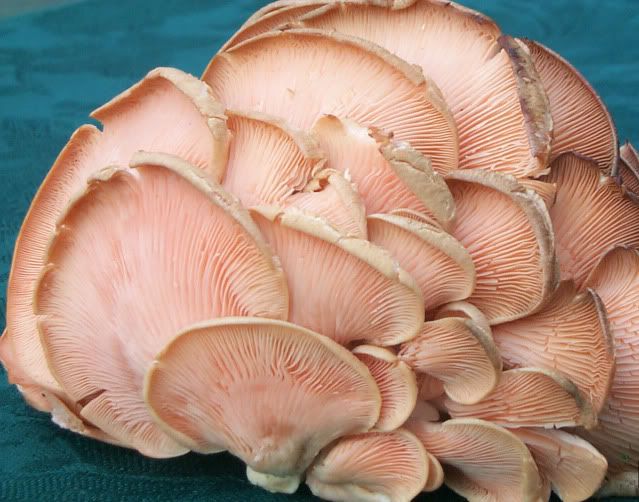Hello and Welcome to Healthy Cook Recipes
There are many food recipes for eating everyday. For people care about Health, just choose a recipe that good for your health. Healthy food is the easiest and safe way of detoxification, and it provides the necessary number of vitamins and minerals. So, find Healthy Cook Recipes that you can eat. The Healthy food would be great for Diet or people who want to lose weight as well. Enjoy your meal today!
Cooking Mushroom for your Health
Mushrooms are not a true vegetable in the sense that it does not have any leaves, roots, or seeds, and really does not need any light to grow. It is a fungus which grows in the dark and creates more mushrooms by releasing spores. Mushrooms are found all over the world and have been a very honored food in many cultures.
Mushrooms are brimming with protein, B vitamins and minerals and copper. They're low in calories and may have antibacterial substances to help the body. Cooked fresh mushrooms offer the most nutritional benefit versus the canned version that may have more sodium. Read the article for cook Mushroom below;
How to Cook and Prepare Mushrooms
By Jenny Styles
Mushrooms are not a vegetable; still they are included in this Section because they are used like a vegetable. In reality, they are a fungus growth containing no chlorophyl, or green coloring matter, and, consisting of an erect stalk that supports a cap-like expansion. They occur in many varieties, both poisonous and non-poisonous. The non-poisonous, or edible, mushrooms are found on rich, moist pastures all over the world and they are also very frequently cultivated. They may be collected in almost any locality, but no person who is not perfectly familiar with their characteristics and therefore able to judge the non-poisonous kinds from the poisonous should attempt to gather them. Fresh mushrooms can usually be found in the markets, but as they are expensive, they should be considered a luxury and used only occasionally. Instead, some of the small canned varieties, which are usually satisfactory for most purposes, should be used when mushrooms are desired and the wild ones cannot be secured.
In food value, mushrooms are not very high, being about equal to beets or carrots in this respect; but they have a higher percentage of protein than these vegetables and they contain extractives similar to those found in meat. To increase their food value, mushrooms are often combined with other foods, such as peas, chestnuts, diced meats, and fowl, and made into dishes of various sorts. Then, again, they are served as a garnish with steaks and other meat dishes. In short, if they can be secured from the surrounding neighborhood or the price is not prohibitive, they should be used in the many excellent ways that are devised for their preparation.
To prepare mushrooms for cooking, clean them by brushing them carefully with a soft brush, by scraping the surface, and, in some cases, by removing the stems. Do not, however, throw the stems away, for they may be used as well as the caps. If the mushrooms are found to be tough, the skin should be peeled off. After being thus prepared, mushrooms may be cooked in various ways, as is explained in the accompanying recipes.
One of the simplest methods of cooking mushrooms is to broil them. This may be done either by exposing them directly to the heat or by pan-broiling them. In this recipe, only the caps are used. Clean the mushrooms that are to be broiled and remove the stems. Place the caps in a broiler that has been greased or in a slightly greased frying pan. Brown them on one side, then turn them and brown them on the other side. Remove to a platter, dot with butter, season with salt and pepper, and serve.
Another very simple way in which to cook mushrooms is to stew them and then serve them on toast. When prepared by this method, both the stems and the caps are utilized. Clean the mushrooms and cut both the caps and the stems into small pieces. Cook until tender in sufficient water, stock, or milk to cover them well, and then season with salt and pepper. To the liquid that remains, add enough flour to thicken it slightly. Serve on toast.
When mushrooms are sautéd, they are often used with other dishes, particularly broiled steak, to improve the flavor and give variety. In fact, steak smothered with mushrooms is considered a luxury. However, sautéd mushrooms are very frequently served alone or, together with a sauce made from the fat in which they are cooked, they are served on toast. Clean the mushrooms, remove the stems, and dredge both stems and caps with flour. Melt fat in the frying pan and place the dredged mushrooms in it. Sauté until brown on both sides and season with salt, pepper, and chopped parsley. Serve in any desired manner. If sauce is desired, add water or stock to the flour and fat that remain in the frying pan, and allow this to cook for a few minutes.
No more delightful combination can be imagined than mushrooms and chestnuts. When combined with a cream sauce and served in patty shells or timbale cases, a dish suitable for the daintiest meal is the result. Another very attractive way in which to serve this combination is to place it in a baking dish, or, as shown, in individual baking dishes, cover it with a layer of biscuit or pastry crust, bake, and serve it as a pie.
Remove the shells from the required number of Italian chestnuts and cook the nut meats in boiling water until tender. Peel off the skins and break the chestnuts into pieces. If fresh mushrooms are used, stew them in boiling water until tender. Cut the stewed or canned mushrooms into pieces of the same size as the chestnuts, and mix the two together. Make a cream sauce by melting the butter, adding the flour, salt, and pepper, and stirring in the hot milk. Cook until the mixture thickens, pour it over the chestnuts and mushrooms, and serve in any of the ways suggested. OKRA is a fruit vegetable consisting of a green pod that is several inches long, pointed at one end, and filled with seeds. Fig. 9 shows okra pods attached to the herb of which they are a part. Although okra originated in Africa, it is for the most part grown in the southern section of the United States. However, canned okra may be obtained almost anywhere. Okra is low in food value, being only slightly higher than cabbage and most of the greens; nevertheless, it is liked by many persons. It is of a mucilaginous, or gummy, consistency, and if it is not properly cooked it becomes very slimy and is then decidedly unpleasant. Because of its gummy nature, it helps to thicken any dish to which it is added. Probably its chief use is as an ingredient in soups, when it is known as gumbo. Chicken gumbo soup is one of the most popular dishes of this kind. The preliminary preparation of okra is the same as that of most other vegetables; that is, the pods should be washed, the stems removed, and the cleaned pods then cooked in sufficient boiling salted water to cover them well.
The simplest way in which to prepare okra is to stew it. When seasoned well with salt, pepper, and butter, stewed okra finds much favor with those who care for this vegetable. Select the required number of okra pods and put them on to cook in enough boiling salted water to cover them well. Cook until the pods are soft enough to be easily pierced a fork. with pepper and, if necessary, additional salt, and add 1 tablespoonful of butter for each four persons to be served.
If one does not desire a dish made entirely of okra, it may be combined with tomatoes. Such a combination, seasoned well and flavored with ham or bacon fat, makes a very tasty dish. ONIONS are the chief commercial vegetable of the bulb crops. They have been cultivated from the earliest times, their native country being Central Asia. Closely allied to the onion are several other bulb vegetables, including garlic, shallots, leeks, and chives, all of which are used more extensively for flavoring dishes than for any other purpose. Fig. 10 shows several varieties of this family, the group of three in the upper right corner being garlic; the bunch in the lower right corner, leeks; the bunch in the lower left corner, green onions; and the remainder of those shown in the illustration, different varieties of dried onions, that is, onions that have been allowed to mature. This entire class of food is characterized by a typical, volatile oil, which in most cases is so strong as to be somewhat irritating and which causes the vegetable to disagree with many persons. This flavor, however, can be almost entirely dissipated by cooking, so that many persons who cannot eat the various members of the onion family raw can tolerate them cooked. In food value, which is found principally as carbohydrate in the form of sugar, this class of foods is not very high, being about the same as carrots, beets, and other root vegetables. Some persons believe that onions have wonderful medicinal value in curing colds and preventing them, but there is really no foundation for such a belief. As has been pointed out, onions are of two general varieties, dried and green. Dried onions, are those which have been allowed to grow to maturity and have then been cured, or dried, to a certain extent. Such onions are in demand at all seasons. Green onions, are those which are pulled, or taken out of the ground, before they have matured and are eaten while fresh. They are especially popular in the spring, although they have a rather long season. Each of these classes has many varieties, which vary in flavor and in color, some of the dried ones being yellow, some red, and others white. All dried onions have excellent keeping qualities, so, after purchasing, no special care need be given to them except to store them in a comparatively cool, dry place. Deterioration is due chiefly to sprouting, for as soon as the new plant begins to grow from the center of the onion, the remainder becomes soft and loses much of its flavor. The green, immature onions, however, will not keep for any length of time, and in order to keep them fresh until they are used, they mustbe stored in a cool, damp place.
The variety of onion known as garlic is very much desired by the people of southern Europe, where it originated. Garlic has a very strong penetrating odor and a biting taste that resemble the odor and taste of onion, but that are much ranker. It is little used by Americans except as a flavoring for salads and various kinds of highly seasoned meats. In reality, a very small amount of garlic is sufficient to lend enough flavor, and so the bowl in which a salad is served is often merely rubbed with garlic before the salad is put into it. No difficulty will be experienced in recognizing garlic in the markets, for here it is found in long strings that are made by braiding the dry stems together.
Closely allied to garlic are shallots, which are native to Syria, where they still grow wild. They are said to have been brought into Europe by the Crusaders. The bulbs of this vegetable are similar to those of garlic, being compound in form, but instead of being enclosed in a thin covering, they are separate when mature, as Fig. 11 shows. Shallots have a strong flavor, but it is not so rank as that of garlic, nor does the odor remain in the mouth so long as that of onion. Many persons like shallots for flavoring stews, soups, salads, and pickles.
Another member of the onion family that is more highly prized and more extensively raised in Europe than in the United States is leeks. leeks do not produce a bulb as do onions. In this vegetable, the lower parts of the leaves grow close together and form a bulb-like stem, or neck, which is fairly solid and which constitutes the edible part. The odor and flavor of leeks are similar to those of onions, but they are somewhat weaker. The fleshy stem may be bleached by banking it with earth, and when this is done, the flavor becomes more mild and the texture more tender than in the onion bulb. Like shallots, leeks are used to flavor stews, soups, and similar foods.
The member of the onion family known as chives is a small plant whose roots remain in the ground for many years and produce year after year dense tufts of slender, hollow leaves. These leaves grow to a height of about 6 or 8 inches and resemble the tops of onions except that they are much smaller. Chives, which have a more delicate flavor than onions, are much used for flavoring soup, stews, salads, meats, and other vegetables and as a garnish for salads. When used for any of these purposes, they are cut into tiny pieces.
Learn about how to make cheese and cheese calories at the Cheese Facts site.
2:15 AM
|
Labels:
Mushroom
|
You can leave a response
Healthy Cook Recipes


1 comments:
Though mushrooms appear to be bland, in reality, it does add a unique flavor and texture to the dishes. I don’t exactly know what it is that I like about mushroom, all I know is that I enjoy eating it. With all its health benefits, we should all start making it a habit to add mushroom to our diet, or at least have a dose of it and have a taste of its wonders.
-Mack Shepperson
Post a Comment